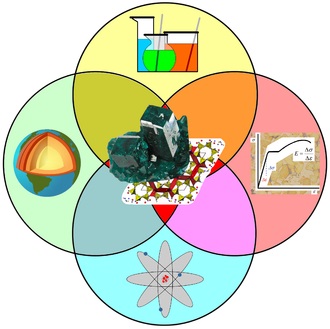|
|
| |
|
|
| |
|
|
|
|
| |
 |
| Mineralogy is a
mixture of chemistry, materials science, physics
and geology. |
Mineralogy
Mineralogy is the study of minerals. Minerals are things
that make rocks. There are many different types of
minerals. Some are hard, like diamonds. Some are soft,
like talc. Some are metal, like gold or silver. Minerals
are put into special groups of minerals made of similar
chemicals, or that have similar structures inside. For
example, the chemicals that make up some minerals line
up in chains, while in other minerals, they make bow-tie
shapes.
History
Early writing on mineralogy, especially on gemstones,
comes from ancient Babylonia, the ancient Greco-Roman
world, ancient and medieval China, and Sanskrit texts
from ancient India and the ancient Islamic world. Books
on the subject included the Naturalis Historia of Pliny
the Elder, which not only described many different
minerals but also explained many of their properties,
and Kitab al Jawahir (Book of Precious Stones) by
Persian scientist Al-Biruni. The German Renaissance
specialist Georgius Agricola wrote works such as De re
metallica (On Metals, 1556) and De Natura Fossilium (On
the Nature of Rocks, 1546) which began the scientific
approach to the subject. Systematic scientific studies
of minerals and rocks developed in post-Renaissance
Europe. The modern study of mineralogy was founded on
the principles of crystallography (the origins of
geometric crystallography, itself, can be traced back to
the mineralogy practiced in the eighteenth and
nineteenth centuries) and to the microscopic study of
rock sections with the invention of the microscope in
the 17th century. |
|
|
Studying minerals can be useful for figuring out certain
things about a rock. Sometimes the shape or size of the
mineral can tell something about the rock as well. For
example, minerals in igneous rocks can help figure out
how long the rock took to cool down (turn from lava into
a rock). Larger minerals mean the rock cooled slowly
(probably underground). Smaller minerals mean the rock
cooled down quickly (probably above ground, like from a
volcano). The type of mineral in a rock can also tell
what kind of a rock it is, or what has happened to the
rock since it formed. Many rocks are named based on what
kinds of minerals they have. |
|
|
Mineralogists (people who study minerals) study minerals
in rocks with hand lenses (a magnifying glass), and in
thin section (thin slices of rock) with microscopes.
They record things about the minerals like how big they
are, what shape they are, what color they are, and if
the mineral changes colors when you turn it.
Mineralogists also record what color minerals turn in a
special light. These details can help mineralogists
figure out what minerals they are looking at. |
|
|
Minerals can be used in a lot of different things, like
jewelry, farming, pottery, making metals, and more .
Mineralogists can help find important minerals in the
Earth using what they know and learn. |
|
|
|
|
|
|
|
|
|
|
|
|
|
|
|
|
|
|
Search Fun Easy English |
|
|
|
|
|
|
|
|
|
|
|
|
|
|
|
About
Contact
Copyright
Resources
Site Map |